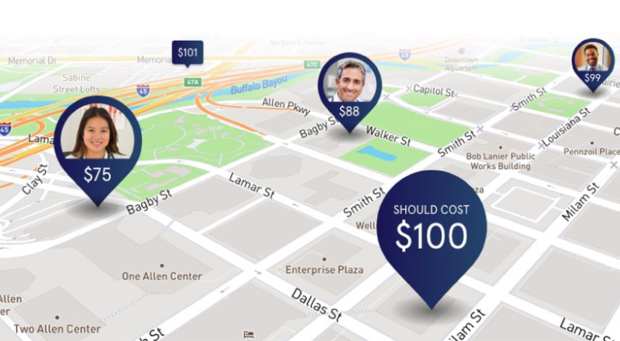Breaking The Black Box Around Healthcare Payments

Paying for healthcare is a unique experience for many reasons. But at the top is the fact that for the majority of patients, price is never something they are quite clear on until long after they’ve had the service and it comes time to pay the bill. No other experience in commerce is quite like this, but healthcare is unique in that the consumer doesn’t really perceive themselves as a consumer. They don’t see themselves as the entity paying for care; their insurance company is.
“The traditional system is so opaque because people actually don’t know what care costs in an insured environment,” Sidecar Health Co-founder and CEO Patrick Quigley told PYMNTS in a recent conversation. “The doctor probably can’t tell you what your costs are because across so many insurance companies and even within the same insurance company, it’s impossible to know at a glance. It takes an entire complicated billing department to actually figure out what the actual cost of care is.”
And that black box around healthcare costs, he said, actually has dire consequences for patients. In a world of high-deductible plans, people are avoiding medical treatment because they fear being hit with an unpredictably massive bill in the future. A fear, he said, that they shouldn’t have to live with, because it’s possible to simply do this in a better way. That better way is by paying cash upfront for treatments, instead of submitting to the confusing morass of insurance backed medical payments.
Rebuilding The Healthcare Payments Paradigm
Sidecar Health is an InsurTech company offering an insurance product quite a bit different than any other on the market — and based on a single observation. Paying for medical services directly out of pocket at the time one receives them is in most cases a lot more cost efficient than paying with an insurance company’s help. A lesson Quigley learned when he got two MRIs within a few weeks of each other a few years back. The one paid for with insurance, he said, cost him $1,300 out of pocket after weeks of a confusing reconciliation process with the insurance company. The second cost him a little over $300 and was concluded with a swipe of his Visa card.
“The system we have is a disaster,” Quigley said. “I go see my doctor and when I get the statement of benefits, I see the doctor billed the insurance company $440, but they negotiated it down to $170. That sounds great, but his actual price is 85.”
Sidecar Health was designed to take that opacity out of the system, by making every payment a cash up-front payment via the Sidecar Health Visa-branded card that the patient swipes at the doctor’s office at the time of their appointment. There is no mystery around the billing, he said, because they know what the cost will be before they enter the door. In fact, Sidecar Health provides them a price comparison tool to let them price shop their medical visit.
Equally important, he said, it also gives them the money to actually pay for it.
“Healthcare is also really expensive,” he said. “And that’s why transparency is not enough by itself. If I know that a knee replacement should cost $19,000, and I don’t have the $19,000, it doesn’t really matter. That’s why what we think we’re doing here is super unique and super powerful because we’re combining the information that you need to make decisions along with the money. That’s why we think the plans we’ve designed are really powerful because we’re going to let you shop for care and we’re also going to give you the money to pay for the shopping.”
And, he said, reward you for shopping wisely. The rate Sidecar Health chooses to pay for, he said, is set around what market average price is determined to be by their algorithm. If the customer pays less for the service than that projection, Sidecar Health refunds the difference. Sidecar Health wants consumers to become better healthcare shoppers — and is willing to reward them for so doing.
Rebuilding A Broken System
While we often talk about how health insurance needs modifying, the truth, Quigley said, is that it needs something much closer to knocking down and rebuilding — because between the opacity, the limited provider networks and the truly ridiculous bills that consumers are being hit with, it is literally killing people. There is no excuse, he said, for an MRI to cost $5,000 in one place and $300 someplace else 10 miles down the road. It’s happening, he said, because patients aren’t used to thinking like consumers when it comes to procuring care — and need to learn the merit of shopping around.
Which is why, Quigley said, the next mission for the company is to do more — specifically in creating more plan choices for more people.
“Our mission is to lower the cost of healthcare for everyone to make it more accessible for everyone in the U.S.,” he said. “And so we started with our first product designed to help the uninsured because in our view, they’re the population that’s been most left behind. The next population that we think needs a lot of help is the ACA population because those plans are very narrow networks with high deductibles.”
Those plans, he said, will start appearing on the ACA exchanges when open enrollment begins next fall. In parallel, he said, the next big market they want to take on is the self-funded employer market, a market he said is notably large and under-serviced. And more broadly, he said, the dream is to disrupt the whole market — which is sick, failing and needs some very disruptive medicine, STAT.
“We believe that we cannot increment our way to a better solution in healthcare. We need to start over,” Quigley said. “And so we think if we first start by making healthcare pricing transparent, and turning patients into purchasers, we can make a dramatic improvement in terms of lowering the cost overall. Then the incremental things like utilization management can add value on top of it, but the best that will ever be is incremental. The big step function change comes from transparency and control given to the people that are actually buying the healthcare.”
